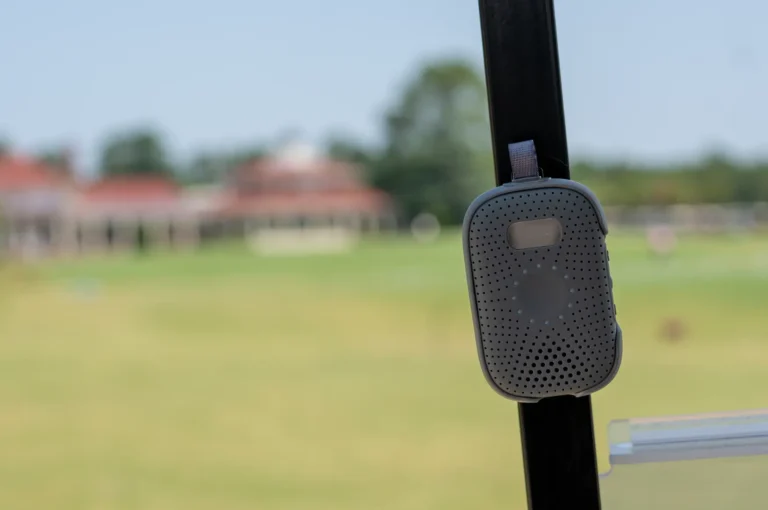Uncovering the Hidden Expenses Behind Traditional Radio Systems
At first glance, investing in two-way radios might seem like a cost-effective, one-time solution for your team’s communication needs. You buy the radios, hand them out, and you’re good to go—right? Unfortunately, that’s rarely the case. Traditional radios come with several hidden costs that can quickly escalate, turning what seems like a smart investment into a long-term financial drain.
Let’s break down the hidden costs of two-way radios, how they affect your budget, and why Relay offers a modern, cost-effective alternative for your business.
Frequent Device Replacements
Even the most durable traditional radios can’t escape the wear and tear of everyday use, especially in high-impact industries like construction, hospitality, and healthcare. Exposure to drops, rough handling, and weather conditions leads to frequent device failures and the need for replacements.
Standard handheld radio can cost hundreds of dollars per unit, and the expenses don’t end there. Replacing just a few units per year can add up to thousands of dollars. Additionally, the costs associated with replacing batteries can also contribute to ongoing expenses. The administrative burden of sourcing and distributing new devices only compounds these costs.
Moreover, downtime from malfunctioning radios can disrupt communication, delay tasks, and decrease productivity. Employees may have to share devices while waiting for replacements, straining communication efficiency.
Costly Infrastructure: Repeaters and Towers
If your team needs to communicate over long distances or across large, multi-level buildings, basic two-way radios alone won’t suffice. Businesses often need to invest in repeaters, towers, or additional infrastructure to boost signal strength.
A single repeater can cost between $1,000 and $3,000, with setup fees depending on the scale of the project. Ongoing maintenance costs can add up quickly, with malfunctioning repeaters causing communication outages that require urgent and costly repairs. Repeaters and towers require regular maintenance to function properly, leading to significant long-term expenses.
Training and Maintenance
Although radios are designed for simplicity, training is necessary—especially for onboarding new employees or rolling out advanced models. Teaching team members how to properly use the devices and troubleshoot common issues takes time and resources.
Beyond training, radios often require periodic updates, programming, and configuration to ensure optimal functionality. When issues arise, diagnosing and fixing problems may require technical expertise that your team may lack, resulting in additional service calls and tech support fees.
Higher Costs from Multiple Devices
In modern workplaces, relying solely on traditional radios can lead to increased expenses due to the necessity of multiple devices. For instance, businesses often need to invest in additional equipment for specific operational needs, such as panic buttons for emergencies or translation devices for multilingual communication. This fragmented approach complicates workflows and significantly drives up costs.
Instead of consolidating budgets into a single, integrated solution, teams may find themselves managing separate systems for different functions, leading to inefficiencies and higher overall expenses. The need for panic and translation features underscores the importance of investing in comprehensive communication solutions that enhance safety and streamline operations. By adopting a unified system, businesses can maximize their investment while providing a more effective environment for their teams.
How Relay Helps You Cut Communication Costs
While the hidden costs of traditional radio systems can be overwhelming, Relay offers a smarter, more affordable alternative:
- Durable Devices That Last: Relay devices are rugged and designed to withstand tough work environments, reducing the need for frequent replacements. Regular software updates ensure your devices stay current without requiring new hardware.
- No Expensive Infrastructure: Relay operates on reliable 4G LTE and WiFi networks, providing nationwide coverage without the need for repeaters, towers, or other costly infrastructure.
- Easy to Use: Relay’s intuitive design minimizes the need for extensive training. Employees can easily get started without complicated instructions, and the plug-and-play setup ensures no complex configuration is required.
- All-in-One Device: Relay offers an all-in-one communication platform that combines essential features—like panic buttons and multilingual capabilities—into a single device. This integration reduces the need for multiple devices, streamlining workflows and minimizing costs.
Ready to Make the Switch?
When you factor in all the hidden costs of traditional radios—frequent replacements, infrastructure, licensing, and maintenance—it becomes clear that the true cost of radios is much higher than anticipated. Relay offers a modern, cost-effective solution that not only reduces these expenses but also provides advanced features to enhance your team’s communication.
Relay can help you cut costs and streamline your business operations. Get custom pricing today.







